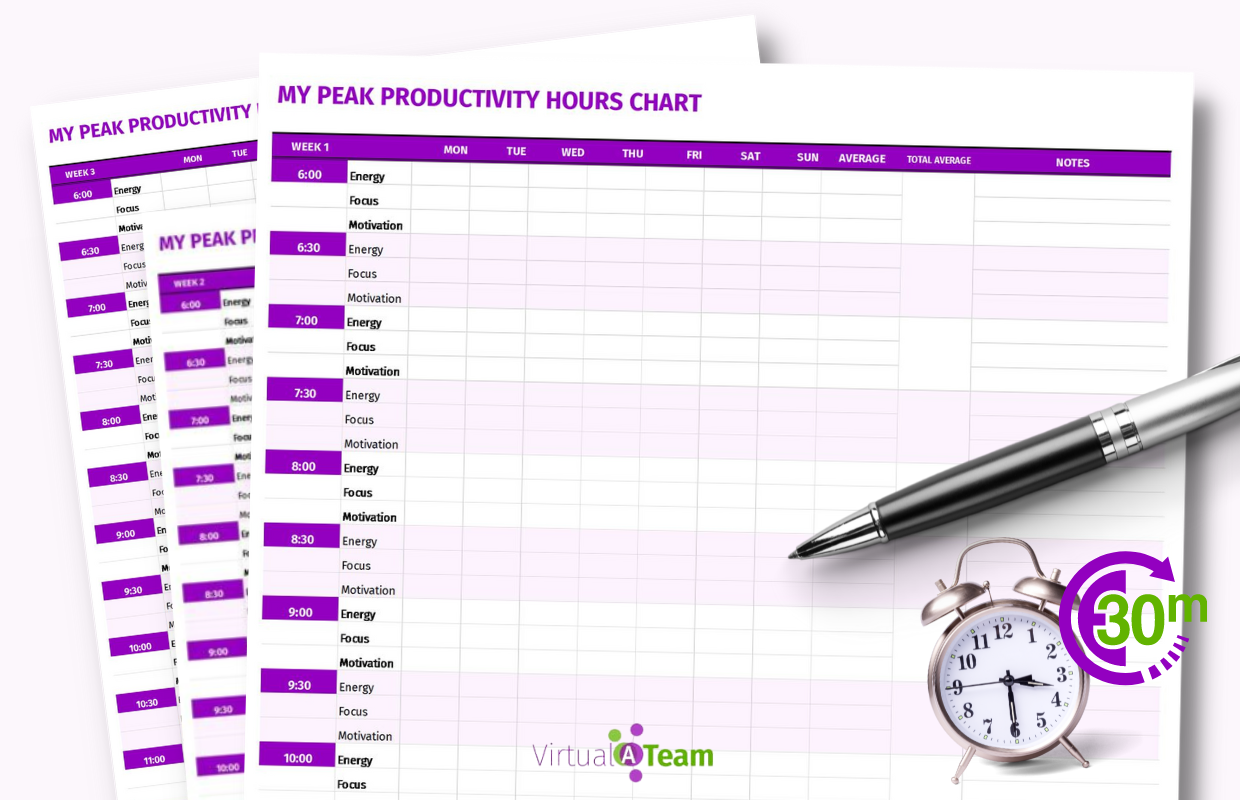Key Takeaways from this Episode:
-
Why being always the Ms./Mr. Fixer need to change
-
How to create a culture of Problem Solvers
-
Bonus Productivity Tip: Create an ideal day schedule (Free PDF worksheet Download)
About Our Pilot:
 Nicole Bandes, founder and CEO of Virtual A Team, is intensely committed to guiding entrepreneurs and small business owners to find and OWN THE ZONE so they can overcome overwhelm and have more time for what matters most.
Nicole Bandes, founder and CEO of Virtual A Team, is intensely committed to guiding entrepreneurs and small business owners to find and OWN THE ZONE so they can overcome overwhelm and have more time for what matters most.Connect with Nicole
Transcription
Have you traded time doing things for time problem solving for your virtual assistant? Today, we are going to talk about that and what you can do instead.
What do you do when a team member comes to you with a problem? Do you:
- give them the answer/ solution
- jump in to fix it yourself (because it would be quicker that way)
- ask them what they recommend to solve it?
Many of us – myself included – are fixers. When someone comes to us with a problem our inclination is to jump in to fix it or give the answer.
This may solve the problem in the moment, but there is a long-term impact to using this approach. One that definitely does not foster allowing you to do only the things that only you can do.
We have a handful of clients that we manage their email for them. Recently, one of my team members came to me to let me know that a client’s email address was being used as a spam email for scammers and she was getting a lot of bounce back and nasty reply emails as a result. The team member wanted to know what they could do about it.
My natural instinct is to jump on Google and find the solution to her challenge. Fortunately, if there is such a thing, I was in the midst of a fever and couldn’t do that for her. All I could do was to offer tips on how she could solve the problem on her own.
Even that, though, may have been more than I should have.
Don’t Create a Culture of Dependency. When your business is your baby, it’s hard to let go and trust others. There’s a tendency to micromanage the work of other performers to make sure it’s up to your standards. Everything someone does for you is checked and rechecked by you. This encourages team members to seek you out for every decision. They learn that you’ll need to rubber-stamp everything anyway so why try to solve the problem on their own?
Even if you aren’t a micromanager, every time we solve problems for our team we are teaching them that they can’t do it on their own. We are teaching them that they have to come to us for the ‘right’ answer.
And then you start to feel frustrated that they can’t seem to figure things out on their own and always have to come to you for the answer. Why are you paying this person in the first place???
Instead, Create a Culture of Problem Solvers
Not all virtual team members are brilliant problem solvers but most of them can be trained to do a little solution searching on their own.
Instead of giving your team the answers or jumping in and doing it yourself, ask them what they would do to figure it out? Encourage them to bring at least 2 to 3 solutions every time they bring a problem to you.
Teach them problem-solving skills that include gathering information, brainstorming possible solutions, and making a decision.
Every time a team member comes up with possible solutions, praise them. Do this in team meetings as well to highlight this valuable skill.
Watch how you respond to failures. If you tend to respond negatively or strongly, over time, your team will learn to shy away from taking chances. They’ll depend on you for the answers to avoid the outburst or negative feedback.
This will be a training process. You may need to encourage them more in the beginning but, as long as you hold fast to requiring them to come up with solutions, they will start looking. Or, you know it’s time for them to be replaced by someone who IS a problem solver.
Eventually, they will get to the point where they come up with solutions that you trust and they won’t even need to get your approval anymore.
Time for today’s In-Flight Tip! Our In-flight tips are short tips or tools that are aimed at helping you build and grow a successful coaching business.
Ready to get more productive? Then today’s tip is just for you.
Peak productivity levels should be one of the first things discussed in any conversation about time management. The best way to manage time is to manage what we do with our time and when. Using peak productivity levels allows you to do the right things at the right time so that you can get things done with the least amount of mistakes in the shortest period.
Peak productivity levels, like most things, vary significantly from one individual to another. The following recipe will help you to identify your own peak productivity levels. Once you have charted and identified your peak energy levels, you can then use those to create an ideal day schedule (IDS). The IDS then allows you to plan all your days with an emphasis on peak productivity. While your day-to-day schedule may vary somewhat from your IDS, the goal is to have it match as closely as possible.
What you’ll need
- A spreadsheet or weekly planner broken down into one hour increments. For an even more fine-tuned plan, shoot for every 30 minutes.
- One to three very typical weeks (longer is better). This is best done when you are most likely to follow your typical routine.
- An alarm.
Ideally, you will complete this prep work over the weekend so that you are ready to begin first thing when you wake up on a Monday morning.
Have easy access to your spreadsheet or planner (a print out is fine if you will always have it handy.)
Be sure to include recordings for energy, motivation and focus.
My Peak Productivity Hours Chart
Start Tracking
- Starting first thing when you wake up, record your energy, motivation and focus ratings on your spreadsheet.
- Note your new ratings each time the alarm sounds.
- Make a quick note of what you ate or drank, any activity you had or how you feel.
- Set your alarm to go off once every 30 minutes to one hour.
- Repeat steps 1 through 4.
- After at least one week of data, calculate the averages for every hour throughout your day. This is easy to do if using a spreadsheet.
- Calculate the averages across all the days to identify your peak energy levels as well as when you are most likely to be focused and motivated.
After a week or two of this exercise you’ll know your Peak Energy, Motivation and Focus times throughout the day.
Bonus Tips
With an idea of when your energy, motivation and focus tends to be strongest, you can plan your ideal day around these peaks and valleys. For example, you can plan tasks or activities that require a high level of focus during the time of day when you typically are most focused. Or plan physical tasks or tasks requiring a high level of energy during the peak energy points. You may even find it helpful to schedule some meditation or a mini nap (less than 20 minutes) for when motivation, energy and focus are all in a slump.
There’s a lot of one-size-fits-all “ideal day” schedules out there. Unfortunately, if they aren’t following your natural energy rhythms they may be doing you more harm than they are good. It may seem like a lot of “work” to identify your peak productivity times but it isn’t hard and is well worth it, even if you don’t tend to have a typical schedule. Just knowing that it is not a great idea to write that highly technical business proposal one hour after lunch could save you hours of time and hundreds or thousands of dollars.
Still have questions about this topic?
Join us in our free private group - Coach's Copilot Hanger - to dive deeper into the topics we share on every episode.
Would you like to be a guest?
We are looking for guests for our shows. If you would like to be coached in a hot seat or have a topic you think would benefit our audience, apply to be on the show here.




